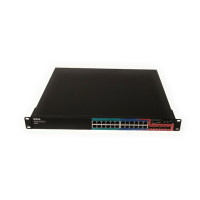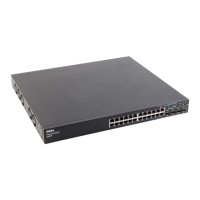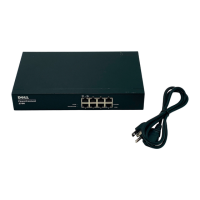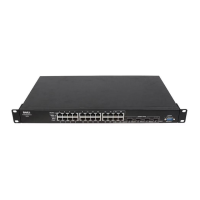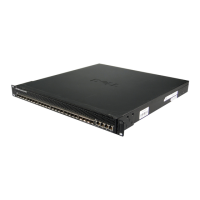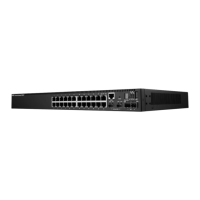266 Configuring System Information
– Virtual Authentication Failure — Signifies that a packet has been received on a virtual interface
from a router with an authentication key or authentication type that conflicts with this router's
authentication key or authentication type. The factory default is disabled.
–
Virtual Bad packet
— Signifies that an OSPF packet has been received on a virtual interface that
cannot be parsed. The factory default is disabled.
–
Virtual Link Configuration Error
— Signifies that a packet has been received on a virtual
interface from a router with configuration parameters that conflict with this router's configuration
parameters. The factory default is disabled.
•LSA Traps
–
LSA Max Age
— Signifies that one of the LSA in the router link-state database has aged to
MaxAge. The factory default is disabled.
–
LSA Originate
— Signifies that a new LSA has been originated by this router. This trap should not
be invoked for simple refreshes of LSAs (every 30 minutes), but only when an LSA is (re)originated
due to a topology change. This trap does not include LSAs that are being flushed because they
have reached MaxAge. The factory default is disabled.
•LSDB Overflow Traps
–
LSDB Overflow
— Signifies that the number of LSAs in the router link-state database has
exceeded OSPF External LSDB Limit. The factory default is disabled.
–
LSDB Approaching Overflow
— Signifies that the number of LSAs in the router link-state
database has exceeded ninety percent of OSPF External LSDB Limit. The factory default is
disabled.
•Retransmit Traps
–
Retransmit Packets
— Signifies that an OSPF packet has been retransmitted on a non- virtual
interface. All packets that may be retransmitted are associated with an LSDB entry. The LS type,
LS ID, and Router ID are used to identify the LSDB entry. The factory default is disabled.
–
Virtual Link Retransmit Packets
— Signifies that an OSPF packet has been retransmitted on a
virtual interface. All packets that may be retransmitted are associated with an LSDB entry. The LS
type, LS ID, and Router ID are used to identify the LSDB entry. The factory default is disabled.
• State Change Traps
–
Interface State Change
— Signifies that there has been a change in the state of a non-virtual
OSPF interface. This trap should be generated when the interface state regresses (e.g., goes from
Dr to Down) or progresses to a terminal state (i.e., Point-to-Point, DR Other, Dr, or Backup). The
factory default is disabled.
–
Neighbor State Change
— Signifies that there has been a change in the state of a non-virtual
OSPF neighbor. This trap should be generated when the neighbor state regresses (e.g., goes from
Attempt or Full to 1-Way or Down) or progresses to a terminal state (e.g.,2-Way or Full). When a
neighbor transitions from or to Full on non-broadcast multi-access and broadcast networks, the
trap should be generated by the designated router. A designated router transitioning to Down will
be noted by OSPF Interface State Change. The factory default is disabled.
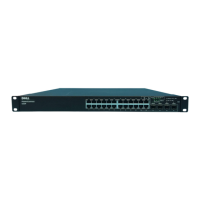
